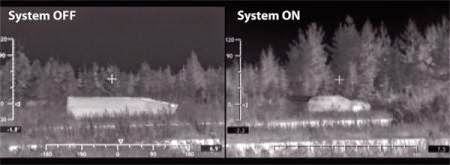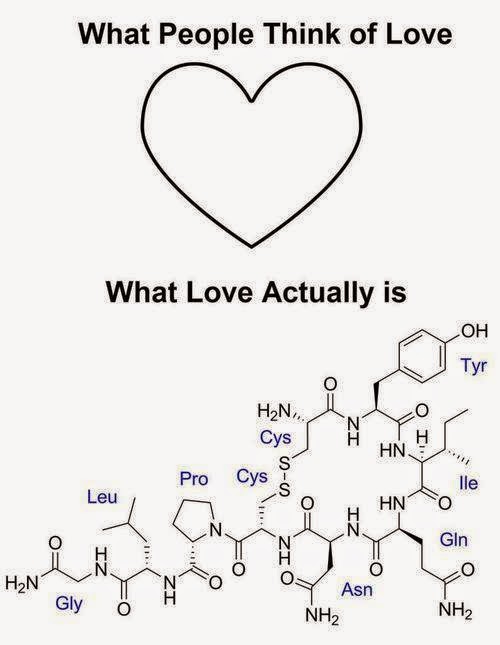That’s why the Romulans and the Klingons had cloaking
devices for their ships, but the Federation didn’t (with very rare exceptions).
It's one of the few toys that came from the series that wasn’t a Federation
invention or used by them. But it was awfully cool.
You hit a button and your ship disappears for everyone
looking at it. The idea wasn’t original to Star Trek, J.R.R. Tolkein had it in
the Lord Of The Rings, and it was a part of many folktales hundreds of years
before he gave it to Frodo. Harry Potter’s cloak is probably a direct result of
Frodo’s, although the movie Predator
gave it a more scientific, not magical, feel that is more reminiscent of Star Trek.
The cloaking devices in the early Star Trek episodes were
not perfect, you couldn’t fire weapons while cloaked and some tracking sensors
could still find you. These are some of the same problems we're having with
cloaking devices today.
Oh yes, we have cloaking devices.
The Klingon bird-of-prey projected it’s invisibility through
its deflector shields; we don’t have anything that cool yet, but we can make
things disappear under the right conditions. However, making a ship disappear
to all wavelengths of electromagnetic radiation using something projected from
the ship itself is beyond us as of yet. Let’s see what we can do.
But there are so many more types of waves than just visible
light. Infrared waves are longer and lower energy than visible light. Heat
sources give off infrared waves, so this is how you can find people in the dark
with night vision goggles. Radio waves are even lower energy, while microwaves
for radar are in between infrared and radio.
Higher energy waves are on the other side of the visible
spectrum; things like ultraviolet, X-rays, and Hulk-producing gamma rays. All
the different types of waveforms can be detected by some kind of detector or
another. They all give clues to the fact that something is out there. Star Trek
cloaking devices masked all of them eventually, but we’ve only gotten to the
point of hiding from a few wavelengths at a time.
As with most scientific or technological advances, first we
have many of ways to try it, and we finally settle on what works best. Remember
VHS vs. Betamax? As our knowledge increases, we will hone in on one or two ways
to make these cloaks work, but for now, there’s a bunch.
This is not to say that we haven’t been hiding things in
plain sight for a long time. Camouflage is an ancient practice, something we
stole from nature. Active camouflage
is a little more tech-y and recent. This technique allows the camouflage to
change as the background changes.
However, when the object moves, there is a blur as the
cameras catches up to the new background. Plus, like with your TV, it only
works very well when you are directly in front of it. Nobody wants to be the
guy watching the Super Bowl from the uncomfortable chair that’s at a 45˚ angle
to the TV screen.
There is also holographic camouflage, so that as you move
past the object, the background appears to move with you. Better, but still not
great. And these examples are for just visible light; nothing about a hologram
projected on a sheet is going to hide your heat signal from a guy with infrared
night specs. The new Adaptiv system allows tanks to project a different heat
signature than they normally would (see picture above).
Many of the newer techniques bend light around the object,
sort of like a stone in a stream. The water comes back together on the other
side and moves on as if the object weren’t there. Same with light rays that
bounce off the background. Using proper technology, they can be made to travel
around the object being cloaked and travel to your eye as if it wasn’t even
there.
The metamaterials offer several different ways to hide
something, like plasmonic cloaking, where the light scattered by an object is
detected by the cloak. The clock then emits a canceling wave at precisely the same length
but 180˚ out of phase. The two waves cancel each other out and it is as if no
light was bounced toward your eye or your detector. Other metamaterials don’t
cancel the signal, but truly bend it around the object as described above.
A mantle cloak is thinner, using a metamaterial screen just
a few millimeters thick to produce the antiphase radiation that cancels out
whatever strikes it. This was demonstrated in 2013 by Andrea Alu from the
University of Texas, just as the plasmonic cloak was a few years previous. The
advantage is that the thinner the cloak or mantle, the broader the range of
wavelengths that it could cancel out.
 |
|
The
Rochester cloak uses the mirrors of different focus
lengths
to bend visible light rays. Check out this website to
make one yourself. While cloaks in the visible range are the
biggest
show, the military or security will be interested in
cloaks
of broad wavelengths, not just visible light.
|
A big problem that we must overcome to mimic Star Trek
cloaking is that fictional ships can scan and see what is out there via emission
of their own probes or detectors, we can't do that yet. With current technologies, the
object is covered or masked, so it can’t emit anything or see anything around
it. Most current cloaks work by absorbing or channeling EM waves, so if the
cloaked object emits anything, it can be detected.
As Frodo could see through the weave of his cloak, we need
to be able to look out from a cloaked object and see what we want, or even send
out some energy to detect things that might be out there. There is limited
advantage to a cloaked ship that is ostensibly blind itself. However, 2012 experiments did develop a plasmonic cloak that detected light, so over a very
narrow range it was an invisible device that could see.
In addition, the cloaks themselves usually scatter light, so
even though the object being cloaked is hidden, the cloak itself might be
detected! The authors suggest that there could be a passive solution using
superconductors, or that mixed metamaterials could scatter the waves bouncing
off the object to be hidden and the cloak.
Next week, how about looking at our versions of phasers – we
do have them, just not small enough to be hand held.
Contributed by Mark E. Lasbury, MS, MSEd, PhD
As Many Exceptions As Rules
Choi, J., & Howell, J. (2014). Paraxial ray optics cloaking Optics Express, 22 (24) DOI: 10.1364/OE.22.029465
Fan, P., Chettiar, U., Cao, L., Afshinmanesh, F., Engheta, N., & Brongersma, M. (2012). An invisible metal–semiconductor photodetector Nature Photonics, 6 (6), 380-385 DOI: 10.1038/nphoton.2012.108
Soric, J., Chen, P., Kerkhoff, A., Rainwater, D., Melin, K., & Alù, A. (2013). Demonstration of an ultralow profile cloak for scattering suppression of a finite-length rod in free space New Journal of Physics, 15 (3) DOI: 10.1088/1367-2630/15/3/033037




















